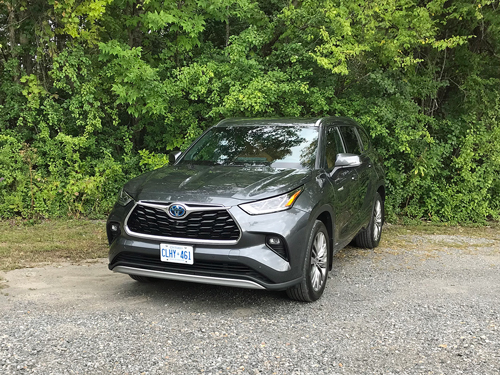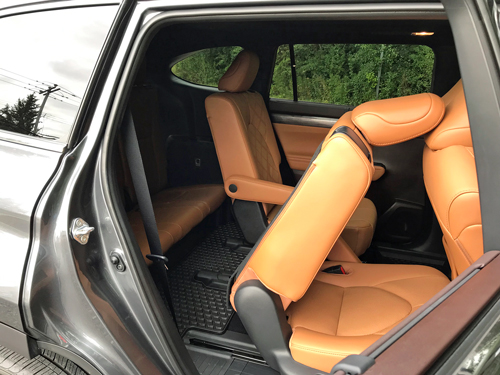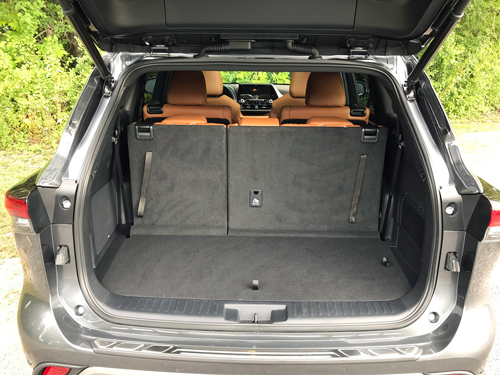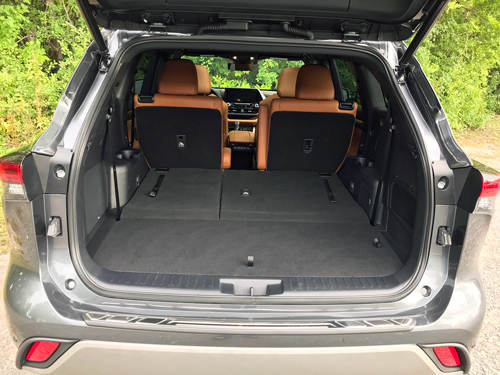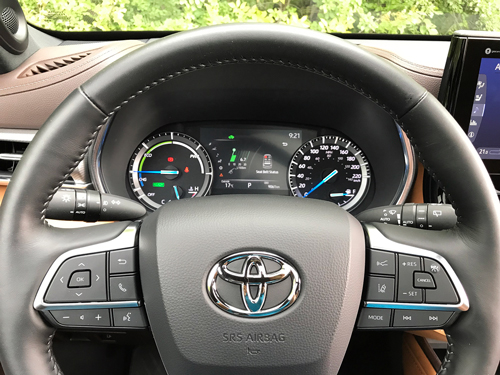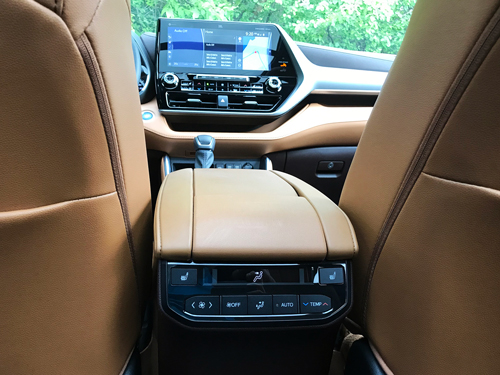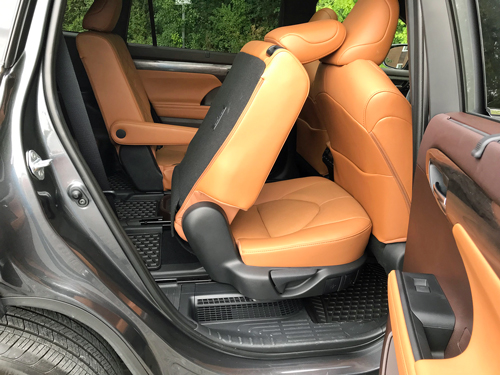The Toyota Highlander has always been among some of my favourite sport utility vehicles, especially the latest iteration. It looks good, offers families a versatile SUV and is backed by the usual Toyota reliability.
And the attractiveness of the Highlander only gets better when you get into the hybrid version, like our 2021 Toyota Highlander Hybrid Limited AWD tester, thanks to the increased fuel efficiency of the powertrain. First offered in 2006, the hybrid version has only gotten better with each passing generation, and it delivers a great driving experience and fuel economy.
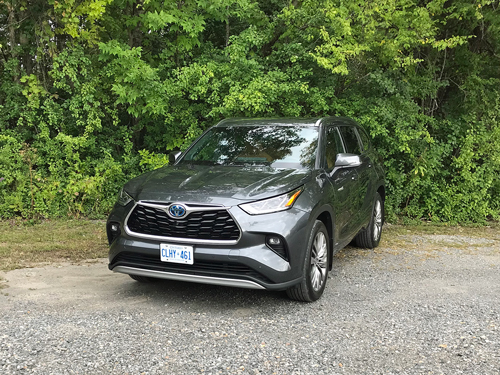
While you will pay a little extra for the hybrid, it’s well worth it in my view. A gas-only Highlander will start at around $40,000, while the hybrid version starts at around $48,000.
We tested the top-of-the-line trim in the hybrid category, with a final price of $58,420.70. But that includes $2,300 for the Platinum package, which adds Platinum coloured front and rear skid plates, rain sensing wipers, a head-up display, bird’s eye view camera, a 12.3-inch display, unique platinum 20-inch alloy wheels, heated second row seats (captain’s chairs) and more.
The only real change for the 2021 model year, other than a new gasoline only XSE trim, is the addition of Toyota’s Safety Sense 2.5+ as a standard feature across the Highlander lineup. The package includes adaptive cruise control, lane-keep assist, front automatic emergency braking, emergency steering assist, road sign recognition, and automatic high-beams.
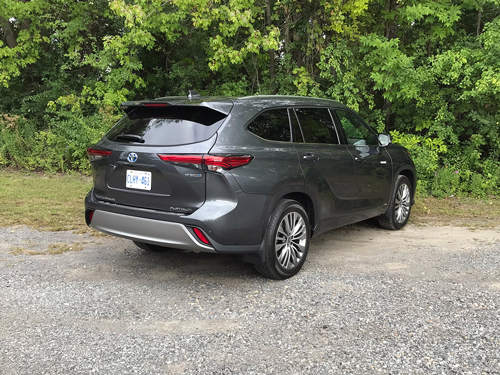
Powertrain: Toyota has an extensive history with hybrid powertrains, so it is something the automaker does very well in my opinion.
The Highlander Hybrid is no exception as it effortlessly switches from the gasoline engine to the electric motors without a hiccup.
The 2.5-litre four-cylinder engine and two electric motors makes a combined 243 horsepower and is pared to a continuously variable automatic transmission, which results in very quick acceleration from a standstill.
Thanks to the efficiency of the hybrid powertrain, the combined fuel economy average is estimated to be 6.7 litres per 100 kilometres, which Toyota says is more efficient than a 2019 Yaris Hatchback. My average after a week was 7.2 L/100 KM, which is still very respectable.
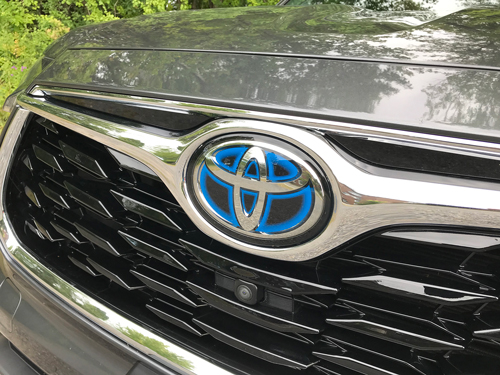
Exterior: The Highlander received a redesign not too long ago and nothing has changed for this model year.
I personally quite like the work Toyota did on the Highlander, from the front grille, nice haunches over the back wheels and the rear end treatment. I noticed a nice blue accent colour on the Toyota logo on the hybrid grille as well.
I would think it would look a little sharper in a colour other than the grey of our tester, but it’s still pretty good overall.
The 20-inch alloy wheels added as part of the Platinum package are also a nice addition to make the exterior more attractive.
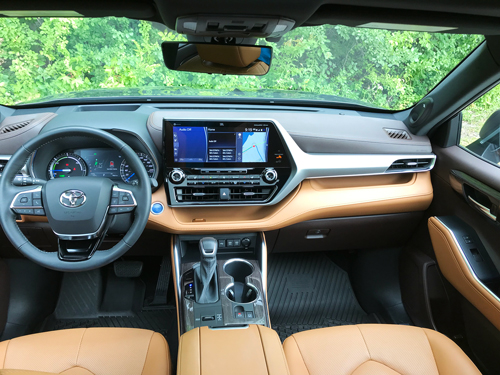
Interior: Inside, the Highlander’s cabin is very nicely done, especially with the Glazed Caramel colour scheme of the seats, dash inlays and door panels of our tester, which brightens things up. It also adds a touch of luxury to the spacious cabin.
The perforated leather seating, heated and cooled up front, is very comfortable and it has room for seven passengers thanks to the Captain’s Chairs in the second row – seats that are heated in this case.
Third-row legroom is not the greatest and I would only send the smallest members of my family to the rearmost seats. Getting back there is made as easy as possible with the ability to slide the second-row seats forward.
The design of the centre stack is neat and well organized, with a slim section of buttons and knobs for ventilation and some audio controls.
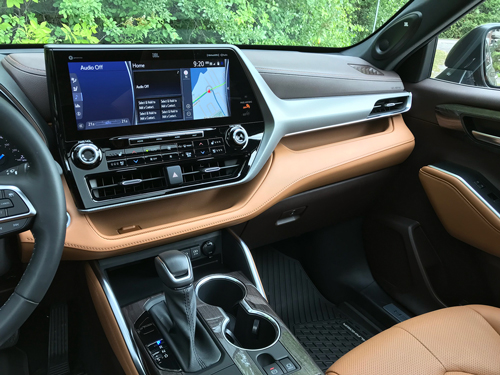
Infotainment: The Platinum package brings with it a tablet style 12.3-inch infotainment screen. Because of that size, even with a split-screen setup, each section is still large enough to see clearly.
Despite the controls mentioned in the previous section, some functions are only adjusted using on-screen commands, such as adjusting the modes of the ventilation system.
Thankfully I found that the icons are large enough and easy to use so that these tasks are not too onerous.
Drive: First, the nit to pick.
I did experience a bit of a weird situation on several occasions with the Highlander Hybrid that happened at the same spot on my morning drive. If I was applying the brakes while going over a little hill in the road, I would feel the vehicle surge forward as if under power rather than slowing down. The fact it happened at pretty much the same spot every time, where there’s a small crest in the road, makes me wonder if it’s something with how the hybrid system is set up.
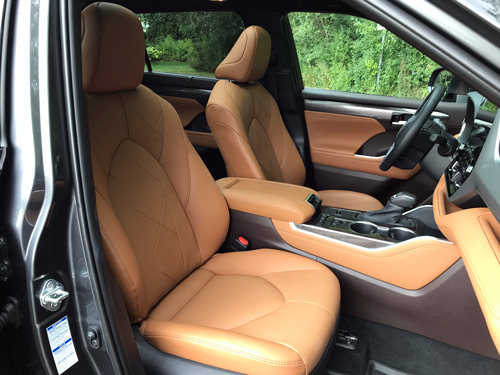
Now, to the good stuff.
The Highlander is a great everyday driver, delivering a comfortable and smooth ride with an excellent steering feel.
The Highlander Hybrid also allows owners to tow up to 1,588 kg (3,500 lbs) compared to 2,268 kg (5,000 lbs) for non-hybrid versions.
Conclusion: Despite that minor hiccup I experienced, there’s very little to dislike about the Highlander Hybrid. The powertrain delivers excellent fuel economy, and the performance from the system means the hybrid never feels like it’s underpowered.
Match that to a really nice cabin and overall drive experience, the Highlander Hybrid is definitely a worthy contender in its segment, and probably one of the best choices out there for a hybrid SUV.
2021 Toyota Highlander Hybrid Limited AWD
Price as tested: $58,420.70
Freight: $1,840.00
Configuration: Front engine/All-wheel drive
Engine/transmission: 2.5-litre 4-cylinder/ ECVT
Power/torque: 243 horsepower/ 175 ft-lb of torque
Fuel (capacity): Regular (65 L)
Combined fuel economy ratings (L/100 km): 6.7 L/100 km
Observed fuel economy (L/100 km): 7.2 L/100 km
Warranties: 3-years/60,000 km (basic)
Competitors: Ford Explorer, Honda Pilot, Kia Telluride, Subaru Ascent
Links: Toyota Canada



